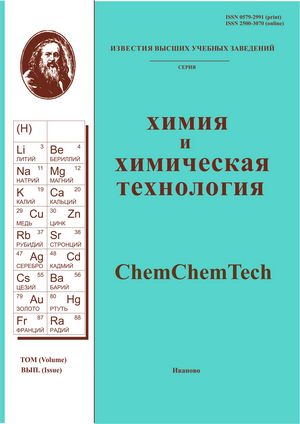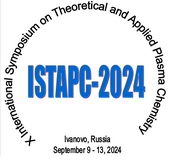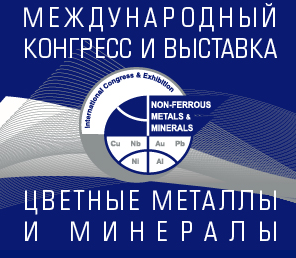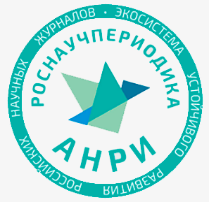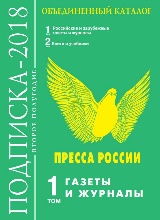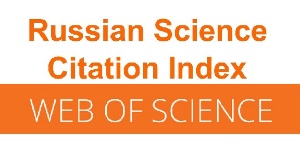ВЛИЯНИЕ СОВМЕСТИМОСТИ В СМЕСЯХ ПОЛИАРИЛАТОВ НА ТРЕНИЕ
Аннотация
Развитие высокотехнологичных отраслей промышленности, таких как авиация, космонавтика, станко- и кораблестроение, специальная техника, а также внедрение аддитивных технологий приводит к постоянному повышению и ужесточению требований к композиционным материалам, в том числе и на основе термопластичных матриц. Для повышения свойств таких материалов часто требуется использование модифицирующих полимерных добавок, обладающих различным уровнем совместимости с основным термопластичным компонентом. В качестве основного материала для исследований был выбран полиарилат ДВ производства НПО «Полимерсинтез», синтезированный методом водоэмульсионной поликонденсации из бисфенола А и эквимольной смеси хлорангидридов изо- и терефталевых кислот. Основным критерием при определении типа полимерных модификаторов являлся уровень их совместимости с полиарилатом ДВ. Совместимость оценивали расчетным методом по показателям поверхностного натяжения и молярного объема полимера и параметра растворимости полимеров. Для проведения эксперимента было отобрано пять полимерных модифицирующих добавок, четыре из которых имели структуру полиарилатов, и один – полифениленсульфида. Проведено исследование влияния совместимости в полимерных смесях на основе полиарилатов на их термомеханические и трибологические свойства. Показано, что наиболее чувствительными к изменению химического строения компонентов полимерных смесей являются трибологические характеристики. Наличие совместимости в полимерных композициях полиарилатов способствует улучшению термофрикционных показателей. В смеси полиарилатов ДВ-ФВ с завершенным процессом межмолекулярного взаимодействия образовавшийся сополимер имеет стабильный характер трения в широком температурном интервале. При отсутствии совместимости в полимерных смесях типа полиарилат-полифениленсульфид стабилизация трибологических характеристик происходит после дополнительной высокотемпературной (250°С) фрикционной обработки.
Для цитирования:
Сорокин А.Е., Краснов А.П., Горошков М.В., Клaбукова Л.Ф., Зюзина Г.Ф. Влияние совместимости в смесях полиарилатов на трение.Изв. вузов. Химия и хим. технология. 2017. Т. 60. Вып. 10. С. 58-67
Литература
Kablov E.N. Strategic directions of development of materials and technologies for their processing for the period up to 2030. Avi-atsion. materialy and tekhnologii. 2012. N S. P. 7-17 (in Russian).
Kablov E.N. Innovative developments FSUE "VIAM" SSC RF on the implementation of "Strategic directions for the develop-ment of materials and technologies for their processing for the period until 2030". Aviatsion. materialy and tekhnologii. 2015. N 1 (34). P. 3-33 (in Russian). DOI: 10.18577/2071-9140-2015-0-1-3-33.
Kablov E.N. Aviation Materials Science: Results and Prospects. Vestn. RAN. 2002. V. 72. N 1. P. 3-12 (in Russian).
Semenova L.V., Beider E.Ya., Petrova G.N., Nefedov N.I. Electrical insulating properties of polymer coatings. Proceedings of VIAM: electron scientific-technical journal. 2014. N 8. 07. URL: http://www.viam-works.ru (the date of circulation is March 17, 2017) (in Russian). DOI: 10.18577/2307-6046-2014-0-1-8-7-7
Petrova G.N., Rumyantseva T.V., Beider E.Ya. Influence of modifying additives on fireproof properties and manufacturability of polycarbonate. Proceedings VIAM: electron scientific-technical journal. 2013. N 6. Art. 06. URL: http://www.viam-works.ru (circulation date is March 17, 2017) (in Russian).
Kablov E.N. Composites: Today and Tomorrow. Metally of Eurazii. 2015. N 1. P. 36-39 (in Russian).
Petrova G.N., Beider E.Ya. Casting thermoplastic materials of aerospace design. Ross. Khim. Zhurn. 2010. V. LIV. N 1. P. 41-45 (in Russian).
Platonov M.M., Petrova G.N., Larionov S.A., Barbotko S.L. Optimization of the composition of a polymer composition with a reduced fire hazard based on polycarbonate for the technology of 3d printing with a molten polymer filament. Izv. Vyssh. Uchebn. Zaved. Khim. Khim. Tekhnol. 2017. V. 60. N 1. P. 87-94. (in Russian). DOI: 10.6060/tcct.2017601.5468.
Kablov E.N., Semenova L.V., Petrova G.N., Larionov S.A., Perfilova D.N. Polymeric composite materials on thermoplastic matrix. Izv. Vyssh. Uchebn. Zaved. Khim. Khim. Tekhnol. 2016. V. 59. N 10. P. 61-71 (in Russian). DOI: 10.6060/tcct.20165910.5368.
Zhaobin Ch., Li T., Yang Y., Liu X., Renguo Lv. Mechanical and tribological properties of PA / PPS blends. Wear. 2004. V. 257. P. 696-707. DOI: 10.1016/J.Wear.2004.03.013.
Paul D.R., Baknell K.B. Polymer mixtures. Volume I: Systematics. SPb.: Scientific foundations and technologies. 2009. 618 p.
Hong I.-K., Lee S. Properties of ultrasound-assisted blends of poly(ethylene terephthalate) with polycarbonate. J. Ind. Eng. Chem. 2013. V. 19. N 1. P. 87-93. DOI: 10.1016/j.jiec.2012.07.006.
Swoboda B., Buonomo S., Leroy E., Lopez Cuesta J.M. Reaction to fire of recycled poly(ethyleneterephthalate)/polycarbonate blends. Polymer Degradation and Stability. 2007. V. 92. N 12. P. 2247-2256. DOI: 10.1016/j.polymdegradstab.2007.01.038.
Gowd E.B., Ramesh C. Morphological consequences of interchange reactions during solid state copolymerization in poly(ethyleneterephthalate) and polycarbonate oligomers. Polymer. 2005. V. 46. N 18. P. 7443-7449. DOI: 10.1016/j.polymer.2005.05.075.
Montaudo G., Puglisi C., Samperi F. Chemical reactions which occur in the thermal treatment of polycar-bonate/polyethyleneterephthalate blends, investigated by direct pyrolysis mass spectrometry. Polymer degradation and stability. 1991. V. 31. P. 291-326. DOI: 10.1016/0141-3910(91)90039-T.
Montaudo G., Puglisi C., Samperi F. Chemical reactions occurring in the thermal treatment of polymer blends investigated by direct pyrolysis mass spectrometry: Polycarbonate/polybuthyleneterephthalate. J. Polymer Sci. Part A: Polymer Chem. 1993. V. 31. N 1. Р. 13-25. DOI: 10.1002/pola.1993.080310102.
Li J.-L., Wang X.-F., Yang C.-J., Yang J.-H., Zhang J.-H. Toughening modification of polycarbonate/poly(butyleneterephthalate) blends achieved by simultaneous addition of elastomer particles and carbon nano-tubes. Composites Part A: Appl. Sci. Manufactur. 2016. V. 90. 200-210. DOI: 10.1016/j.compositesa.2016.07.006.
Laoutid F., Picard A., Persenaire O., Dubois P. Investigation of the alumina nanoparticle role in the enhancement of the mechan-ical properties of polyamide/polycarbonate blends. Polymer Degradat. Stabil. 2015. V. 112. P. 137-144. DOI: 10.1016/j.polymdegradstab.2014.12.021.
Gattiglia E., Turturro A., La Mantia F.P., Valenza A. Blends of polyamide 6 and bisphenol A polycarbonate. Effects of inter-change reactions on morphology and mechanical properties. J. Appl. Polymer Sci. 1992. V. 46. N 11. Р. 1887-1897. DOI: 10.1002/app.1992.070461102.
Chapleau N., Favis B.D., Carreau P.J. Measuring the interfacial tension ofpolyamide/polyethylene and polycar-bonate/polypropylene blends: effect of temperature. Polymer. 2000. V. 41. N 17. P. 6695-6698. DOI: 10.1016/S0032-3861(00)00006-9.
Jang J., Won J. Crystallisation and phase behaviour of poly(butyleneterephthalate)/ polyarylate blends. Polymer. 1998. V. 39. N 18. P. 4335-4342. DOI: 10.1016/S0032-3861(97)10030-1.
Miley D.M., Runt J. Transesterification in poly(butyleneterephthalate)/polyarylate blends. Polymer. 1992. V. 33. N 21.
P. 4643-4646. DOI: 10.1016/0032-3861(92)90427-X.
Fernandez-Berridi M.J., Iruin J.J., Maiza I. Molten polyarylate-poly(butylene terephthalate) blends: kinetics and statistical anal-ysis of the exchange reactions by 1H n.m.r. Polymer. 1995. V. 36. N 7. P. 1357-1361. DOI: 10.1016/0032-3861(95)95912-K.
Korshak V.V., Gribova I.A., Zyuzina G.F., Pavlova S.A., Slonimsky G.L., Dubrova L.V., Komarova L.I., Petrovsky P. V., Babchinitser T.M., Bragina T.P. Investigation of chemical transformations in mixtures of incompatible polymers under com-bined mechano- and thermo-action. DAN SSSR. 1984. N 5. P. 1137-1140 (in Russian).
Zhang H., Westmoreland P.R., Farris R.J., Coughlin E.B., Brzozowski Z.K. Thermal decomposition and flammability of fire-resistant, UV / visible-sensitive polyarylates, copolymers and blends. Polymer. 2002. V. 43. N 20. P. 5463-5472. DOI: 10.1016/S0032-3861(02)00358-0.
Korshak V.V., Gribova I.A., Krasnov A.P., Pavlova S.A., Slonimsky G.L., Askadsky A.A. Chemical structure of the unit of polystearylenes and their wear resistance. DAN SSSR. 1985. V. 282. N 3. P. 654-659 (in Russian).
Buller K.U. Heat-resistant polymers. M.: Khimiya. 1984. 1056 p.
Korshak V.V., Gribova I.A., Zyuzina G.F., Slonimsky G.L., Komarova L.I., Soldatov E.S., Alekseev A.M., Chudinov M.G. On some features of the friction of mixtures of incompatible polymers. Trenie i Iznos. T. 5. N 3. P. 389-395 (in Russian).
Korshak V.V., Gribova I.A., Zyuzina G.F. Investigation of frictional properties of casting materials based on mixtures of poly-arylate and polyamide. Trenie i Iznos. 1985. V. 6. N 4. P. 587-596 (in Russian).
Ahn T.O., Lee S., Jeong H.M., Lee S.W. Compatibilizing effect of polyarylate-polyamide-6 block copolymers on polyary-late/polyamide-6 blends: 2. Polymer. 1996. V. 37. N 16. P. 3559-3565 DOI: 10.1016/0032-3861(96)00396-5.
Korshak V.V. Influence of simultaneous influence of temperature and mechanical fields on the formation of the structure and properties of polyarylate with polyamide. DAN SSSR. 1985. V. 281. N 1. P. 93-99 (in Russian).
Askadsky A.A., Kondrashchenko V.I. Computer modeling of polymers. 1. Atomic-molecular level. M.: Nauchnyi mir. 1999. 544 p (in Russian).
Korshak V.V. On the influence of the structure of polyphenylene sulfide on the properties of antifriction self-lubricating plastics on its basis. RZhKhim. 1979. V. 19. P. 171 (in Russian).

